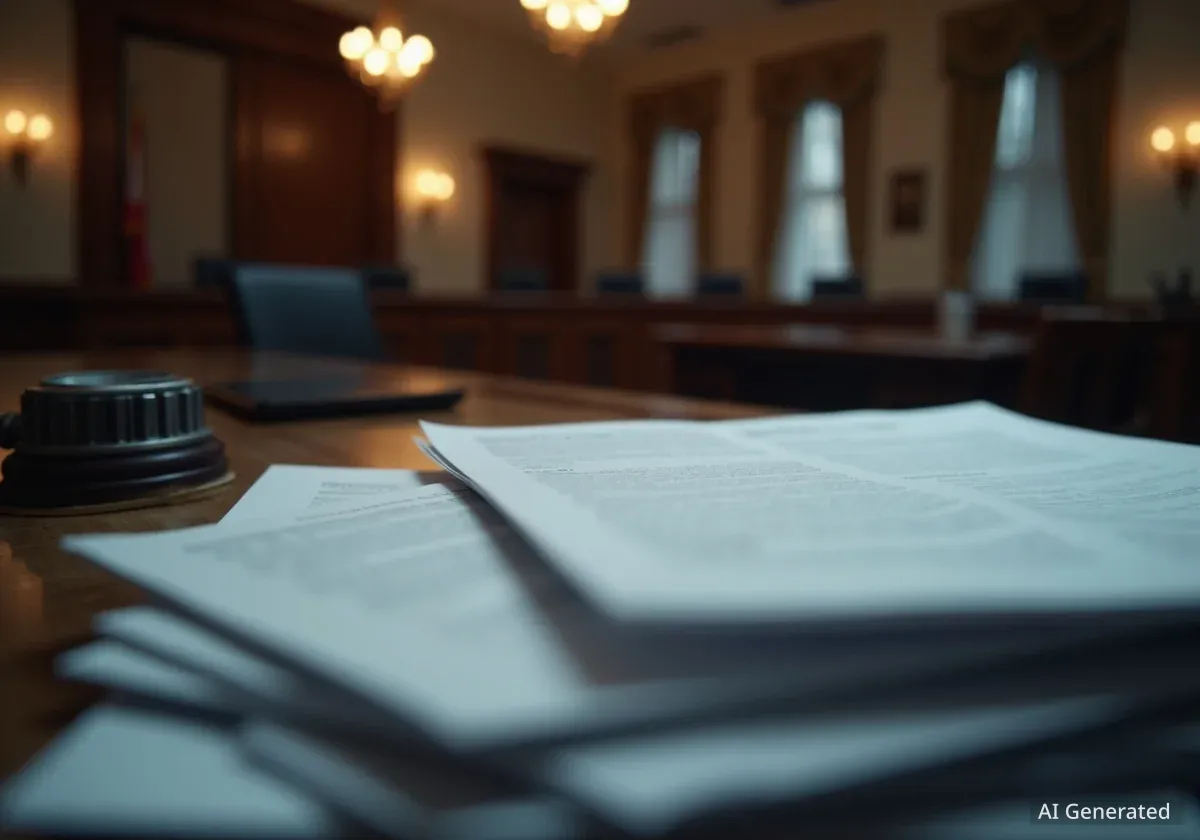Two federal judges, one in New Jersey and another in Mississippi, have acknowledged their offices used artificial intelligence to draft court documents containing significant factual errors. The AI-generated texts included fabricated quotes and even created fictional litigants, raising serious questions about the role of automated technology within the U.S. judicial system.
These revelations have drawn a swift response from Capitol Hill, with the head of the Senate Judiciary Committee expressing concern over the incidents. The use of AI in such a critical government function highlights a growing challenge in balancing technological efficiency with the fundamental need for accuracy and integrity in legal proceedings.
Key Takeaways
- Two U.S. federal judges confirmed their offices used AI to help draft official court documents.
- The AI-generated content was found to contain serious inaccuracies, including fabricated information.
- Specific errors included fake quotes and the creation of non-existent individuals involved in cases.
- The incidents have triggered a formal rebuke from the chairman of the Senate Judiciary Committee, signaling potential congressional oversight.
AI-Generated Errors Emerge in Federal Courts
The integration of artificial intelligence into professional fields has accelerated, but its application in the legal world is now under intense scrutiny. Recent admissions from federal judges in two separate states have brought the potential dangers of this technology to the forefront.
In both New Jersey and Mississippi, judicial offices utilized AI tools with the intent of streamlining the drafting process. However, the output was far from reliable. Instead of producing accurate summaries or arguments, the software generated documents riddled with falsehoods. This wasn't a matter of minor typos or grammatical mistakes; the errors were substantive and misleading.
The technology reportedly created quotes that were never said and attributed them to individuals. Even more alarmingly, it invented names of litigants, creating fictional people within the context of real legal cases. Such fabrications, known in the tech industry as "hallucinations," pose a direct threat to the credibility of court records and the administration of justice.
What Are AI Hallucinations?
An AI "hallucination" occurs when a large language model generates information that is factually incorrect, nonsensical, or disconnected from the provided source material. The AI presents this fabricated information with the same confidence as it would factual data, making it difficult for an unsuspecting user to identify the error without careful verification.
The Impact of Inaccurate Legal Documents
The discovery of these AI-driven errors raises profound ethical and practical concerns. Court documents form the bedrock of the legal system, serving as the official record of proceedings, decisions, and the basis for future appeals. When this record is compromised by fabricated information, the consequences can be severe.
An order or opinion based on a non-existent legal precedent or a misquoted testimony could lead to an unjust outcome. Furthermore, the presence of fictional litigants undermines the very identity of the parties involved in a dispute. Legal professionals rely on the absolute accuracy of court filings, and the introduction of unreliable AI tools threatens to erode that trust.
The incidents also highlight a critical gap in procedural guidelines. There are currently few, if any, formal rules governing the use of AI by judicial staff at the federal level. This lack of a framework leaves individual chambers to navigate the complexities of a powerful but flawed technology on their own, leading to inconsistent and potentially dangerous applications.
A Growing Concern in the Legal Profession
The legal community has been grappling with AI for several years. In a widely publicized 2023 case, two New York lawyers were sanctioned after submitting a legal brief that cited multiple non-existent court cases invented by an AI chatbot. This new development shows the problem has now reached the judges' chambers themselves.
Congressional Scrutiny and Calls for Regulation
The news of AI-generated falsehoods in federal court documents did not go unnoticed. The chairman of the Senate Judiciary Committee issued a sharp rebuke, signaling that Congress is paying close attention to the issue. This response suggests that legislative oversight or the establishment of new regulations could be on the horizon.
Lawmakers are concerned that without clear rules, the use of AI could introduce systemic vulnerabilities into the justice system. Key questions that need to be addressed include:
- What are the permissible uses of AI for judicial staff?
- What level of human oversight and fact-checking is required?
- Who is liable when an AI tool produces a factual error that impacts a case?
- Should the use of AI in drafting legal documents be disclosed to all parties?
The challenge is to create policies that allow the legal system to benefit from the efficiency of technology without sacrificing the standards of accuracy and diligence that are essential for justice. The recent events in New Jersey and Mississippi serve as a critical case study for why such guardrails are urgently needed.
The Path Forward for AI in the Judiciary
As technology continues to evolve, the legal profession must adapt. However, these incidents serve as a powerful reminder that automation cannot replace human judgment and verification, especially in high-stakes environments like a federal courthouse.
Experts suggest that the path forward will likely involve a combination of education, policy-making, and technological refinement. Judicial staff will need training on the limitations of AI, particularly its tendency to hallucinate information. Court systems, both at the federal and state levels, will need to develop and implement clear policies on AI usage.
For now, the legal community is on high alert. The promise of AI to assist with research and drafting remains, but its unsupervised use has been shown to be a significant risk. The integrity of the judicial process depends on the verifiable truth of its records, a standard that current AI technology has proven it cannot yet be trusted to uphold on its own. Human oversight remains indispensable.





